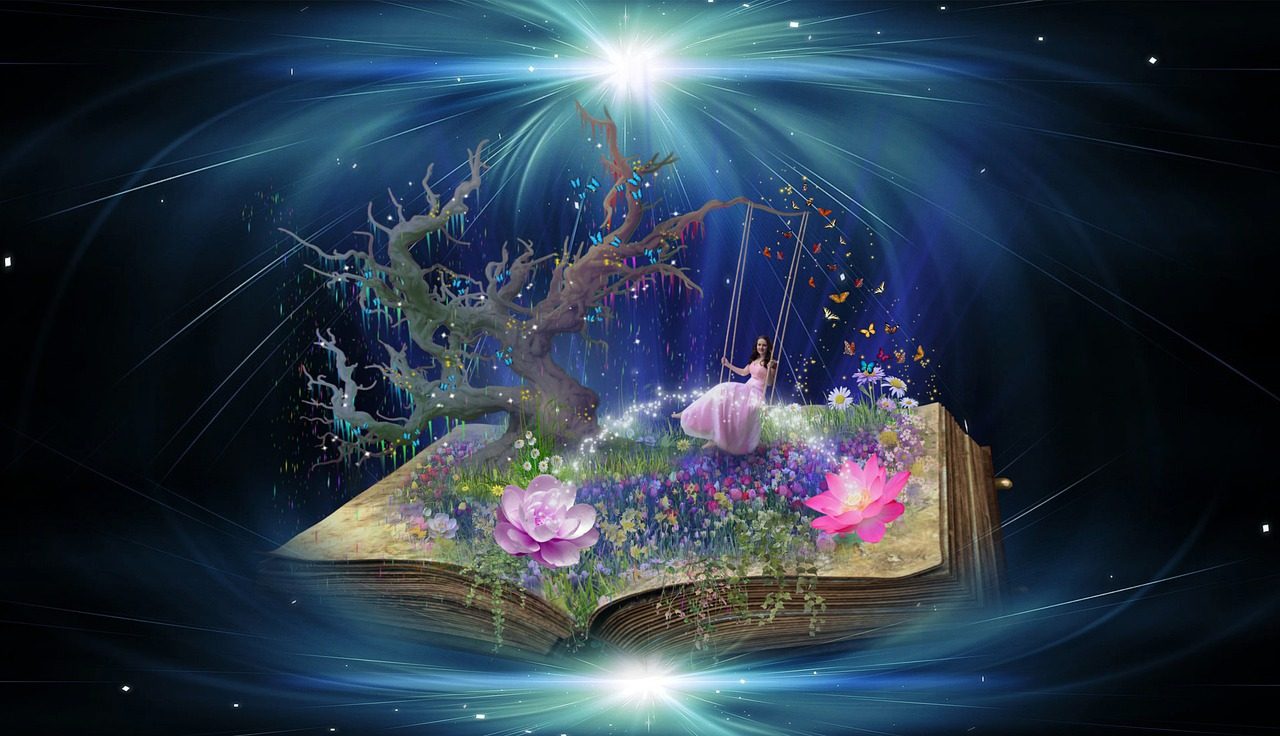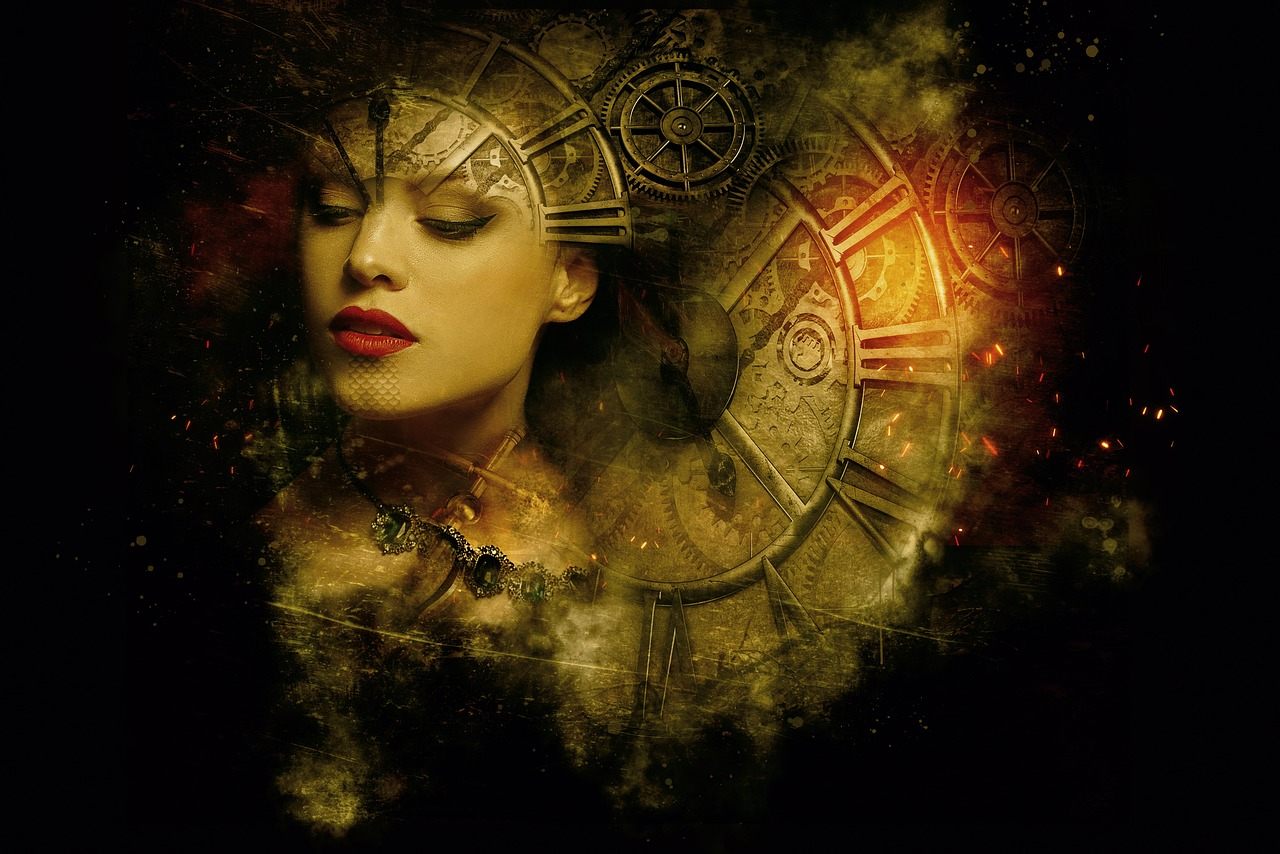
Grimoires – The Mysterious World of Grimoires: Unveiling Ancient Magical Texts
In the annals of history, humanity’s fascination with the arcane and the supernatural has given rise to a plethora of mystic practices and beliefs. Among these, grimoires stand out as enigmatic manuscripts that bridge the gap between the mortal realm and the ethereal world. Grimoires, often referred to as magical textbooks or spellbooks, are repositories of esoteric knowledge, offering insights into the practices of magic, alchemy, astrology, and more. With a history spanning centuries, these books have played a pivotal role in shaping the perceptions of magic and mysticism throughout different cultures and eras.
Origins and Evolution
The origins of grimoires can be traced back to the ancient civilizations of Egypt and Mesopotamia. The word “grimoire” itself is believed to have originated from the Old French term “grammaire,” which referred to any kind of book written in Latin. However, it’s important to note that grimoires weren’t exclusively concerned with language and grammar; they encompassed a wide range of topics, including medicine, astrology, and, most notably, magic.
These magical books gained significant prominence during the medieval and Renaissance periods. These texts were usually handwritten, meticulously illustrated, and kept in the hands of a select few practitioners who considered themselves custodians of arcane wisdom. Some of the most well-known supernatural manuals from this era include “The Key of Solomon,” “The Lesser Key of Solomon” (also known as the “Lemegeton”), and the “Picatrix.” These texts offered instructions on summoning spirits, creating talismans, and conducting rituals, reflecting the prevailing belief in the interconnectedness of the material and spiritual realms.
Contents and Cultural and Geographical Variations
Grimoires are diverse in their content and themes, but they often share common elements. These books typically contain instructions for performing rituals, incantations, and spells, as well as guidance on crafting magical objects like talismans and amulets. The rituals described therein were often aimed at achieving a variety of goals, ranging from personal empowerment to divination and communication with the spirit world.
The themes explored in magical writngs are equally diverse. Some focus on summoning and controlling spirits, while others delve into the realms of alchemical transformation and astrological correspondences. The “Ars Goetia,” a section of the “Lemegeton,” for instance, provides detailed descriptions of 72 demons, along with instructions for their conjuration and control. On the other hand, the “Book of Abramelin” outlines a complex ritual for contacting one’s Holy Guardian Angel, aligning more with spiritual enlightenment than traditional spellcasting.
Grimoires have traversed borders and cultures, adapting to the beliefs and practices of different societies. In Europe, during the Renaissance, grimoires were closely linked with the burgeoning interest in the occult, mysticism, and esotericism. These texts were often seen as conduits to secret knowledge that could empower individuals and elevate them above the constraints of the material world.
In the Middle East, the “Picatrix,” believed to have originated in Arabic sources, combines astrological knowledge with magical practices. It’s a testament to the interconnectedness of astrology and magic during that time, highlighting how grimoires could merge various disciplines to unlock supernatural power.
In Asia, particularly in India and China, similar traditions of magical texts exist. In India, texts like the “Tantras” and “Agamas” delve into rituals, meditation practices, and the worship of deities. In China, the “Daoist Canon” encompasses a vast array of texts dealing with alchemy, divination, and spiritual cultivation. While these texts may not be labeled as grimoires in the Western sense, they share the same goal of transmitting hidden wisdom to those who seek it.
The Modern Perception
The perception of grimoires has evolved over time. During the Enlightenment, a period marked by rationality and scientific inquiry, many of these books were dismissed as superstitious relics of the past. However, the 19th and 20th centuries saw a resurgence of interest in the occult, with figures like Aleister Crowley and the Hermetic Order of the Golden Dawn contributing to the revival of magical practices and the study of such occult manuals.
Today, grimoires continue to captivate the imagination of people around the world. They have found a place not only within occult and esoteric circles but also in popular culture. From literature to movies and video games, the mystique of these books on supernatural operations is often portrayed as a source of both wondrous power and perilous consequences.
The Power and Ethical Dilemmas
The allure of magical texts lies in their promise of unlocking hidden knowledge and supernatural abilities. However, this power comes with ethical dilemmas. The very act of manipulating forces beyond our understanding raises questions about the potential consequences of such actions. Many grimoires contain warnings about the dangers of misusing magical knowledge or failing to follow prescribed rituals. The story of Faust, who famously sold his soul to the devil for unlimited knowledge and power, serves as a cautionary tale about the perils of unbridled ambition.
Furthermore, the question of cultural appropriation arises when outsiders seek to adopt practices from cultures that are not their own. Grimoires from different cultures often carry deep spiritual significance and are intertwined with specific belief systems. When these practices are divorced from their cultural contexts, they can lose their authenticity and be reduced to mere commodification.
In the digital age, books on magical proceedures have found a new platform for preservation and dissemination. Many historical grimoires are now available online, allowing researchers and enthusiasts to explore these texts without the limitations of physical access. However, this digital accessibility also raises concerns about accuracy, as mistranslations or misinterpretations can easily propagate.
Efforts to preserve and study such magical texts in their original forms continue in various academic and occult communities. Libraries and museums house rare manuscripts, and scholars work to decode their secrets while considering the historical and cultural contexts that gave rise to them.
Grimoires represent an enduring human quest for hidden wisdom and the desire to transcend the boundaries of the mundane. Whether seen as repositories of magical spells, guides to spiritual transformation, or glimpses into the interconnectedness of the universe, these texts continue to shape our perceptions of magic, mysticism, and the unknown.
The world of grimoires is as complex and enigmatic as the forces they seek to tap into. While skepticism and rationality have challenged their legitimacy, the enduring fascination with these texts demonstrates a universal longing for something beyond the ordinary—a desire to explore the realms that lie between the known and the unknowable.
As we navigate the intricacies of the modern world, grimoires remind us that the allure of the arcane still beckons, inviting us to unlock the secrets that have fascinated humanity for centuries. Whether viewed as relics of a bygone era or as keys to hidden realms, grimoires continue to cast their spell on those who seek to unravel thei
The Lesser Key of Solomon and the Greater Key of Solomon: Unveiling Mystical Grimoires
In the realm of mystical literature and esoteric practices, few texts have captured the imagination and curiosity of seekers as much as the “Lesser Key of Solomon” and the “Greater Key of Solomon.” These two grimoires, believed to be of medieval origin, provide a fascinating glimpse into the world of ceremonial magic, summoning of spirits, and the intricate art of talismanic crafting. Let’s delve into the intricacies of these two influential texts and explore their significance within the context of magical traditions.
The Lesser Key of Solomon: Ars Goetia
The “Lesser Key of Solomon,” also known as “Lemegeton Clavicula Salomonis,” is a grimoire that dates back to the 17th century or earlier. It is divided into five sections, or “books,” each of which deals with a distinct aspect of magic and the supernatural. The most infamous and widely discussed section of this grimoire is the “Ars Goetia,” which focuses on the summoning and binding of spirits, specifically demons.
The “Ars Goetia” outlines the procedures for summoning 72 demons, each with its own unique attributes, powers, and abilities. These demons are organized into a hierarchy, with King Solomon being the central figure who commands them. Practitioners who seek to harness the powers of these demons are provided with detailed instructions for constructing magical circles, using various tools and implements, and reciting specific conjurations and invocations. The aim of these summonings could range from gaining knowledge and power to receiving assistance in personal matters.
While this might appear to be a manual for dark and malevolent practices, interpretations of the text vary widely. Some see it as a symbolic exploration of the human psyche and the struggle to control one’s inner demons, while others view it as a reflection of the moral and spiritual challenges faced by those who seek power at any cost.

The Greater Key of Solomon: Clavicula Salomonis
Contrary to the “Lesser Key,” the “Greater Key of Solomon” (or “Clavicula Salomonis”) is divided into two books and emphasizes a more divine and angelic aspect of magic. This grimoire, believed to have been written in the 14th or 15th century, contains a compilation of rituals, invocations, and instructions that focus on ceremonial magic, astrology, and the creation of talismans.
The first book of the “Greater Key” deals with the construction and consecration of various magical tools, such as wands, robes, and pentacles. It also outlines rituals for invoking angels, particularly the seven planetary angels associated with the days of the week. These rituals often involve elaborate preparations, precise timings, and the careful observance of correspondences.
The second book of the “Greater Key” delves into the creation and consecration of talismans, which are believed to harness the energies and influences of celestial bodies. These talismans are intended to bring about specific effects, such as protection, healing, or attracting love. The instructions for crafting these talismans are intricate and emphasize the importance of timing, astrological alignments, and sacred geometry.
Unlike the “Ars Goetia,” the “Greater Key” focuses on the harmony between humans and the divine, seeking spiritual enlightenment and the benevolent assistance of higher beings. It is often seen as a manual for achieving personal transformation and aligning oneself with the cosmic forces.
Influence and Legacy
Both the “Lesser Key” and the “Greater Key” have had a profound impact on the development of Western magical traditions. They have inspired countless practitioners, occultists, and scholars to explore the boundaries of human potential, the mysteries of the supernatural, and the intricate connections between the spiritual and material worlds.
These magical texts have also found their way into popular culture, becoming symbols of arcane knowledge and mysticism. References to their rituals, symbols, and entities can be found in literature, movies, and various forms of media, further solidifying their place in the collective imagination.
Interpreting the contents of the two books is a complex endeavor. Scholars, occultists, and enthusiasts often approach these texts from different perspectives. Some view them as repositories of hidden wisdom that can unlock profound truths, while others consider them as products of their historical context, reflecting the beliefs and practices of their time.
Controversies surrounding these grimoires stem from the ethical and moral implications of their practices. Critics argue that attempting to control or manipulate supernatural entities might have unintended consequences, leading to spiritual, psychological, or even physical harm. Additionally, debates about cultural appropriation arise when individuals from diverse backgrounds engage with these texts, as they often draw upon specific cultural and religious elements.
Conclusion
The “Lesser Key of Solomon” and the “Greater Key of Solomon” are intricate and multifaceted occult written works that have left an indelible mark on the landscape of magical literature. Whether one views them as gateways to hidden powers, symbolic representations of psychological processes, or simply as historical artifacts, these texts continue to fuel the curiosity of those who seek to explore the boundaries of human understanding and the mysteries of the universe. In the end, their significance lies not only in their potential for supernatural abilities but also in their ability to ignite the human spirit’s eternal quest for knowledge, enlightenment, and connection with the unknown.
The concept of the The “Black Pullet,” or “La Poule Noire originates from a French grimoire of the same name, believed to have been written in the 18th century. It is a unique and enigmatic magical text that falls within the genre of occult literature. The enchantment instruction book focuses as a narrative, presenting itself as a firsthand account of an anonymous French officer who discovered the secrets contained within a magical talisman in Egypt.
Origin and Magical Operations and Powers
The “Black Pullet” is distinct from many other grimoires due to its storytelling approach. The narrative unfolds with the protagonist, a soldier, accidentally discovering an ancient talisman while on a military expedition in Egypt. This talisman is a black hen, depicted on the cover of the mysterious treatise, and it contains a wealth of hidden knowledge about the art of magical operations, communication with supernatural entities, and the creation of powerful talismans.
The text details the soldier’s interactions with a mysterious, wise old man who imparts esoteric knowledge and teaches him the secrets of the talisman. The content of the grimoire includes instructions for various rituals, magical practices, and the creation of talismans that harness the power of celestial and elemental forces. It covers topics such as summoning spirits, divination, healing, and obtaining hidden treasures.
There is strong emphasis on the control and summoning of supernatural entities, particularly spirits and genies. The grimoire provides instructions on how to summon and communicate with these beings, often with the intent of gaining their assistance and insights. It includes descriptions of specific rituals, tools, and incantations required to establish contact with these entities and compel them to serve the practitioner’s needs.
Another prominent feature of the witchcraft manual is its guidance on creating talismans and amulets. These objects are intended to confer specific powers or protection upon their bearers. The instructions provided in the text describe the materials, symbols, and rituals necessary to construct these magical items, which are said to draw upon the energies of the cosmos and the natural world.
While the “Black Pullet” presents itself as a straightforward magical manual, it is also rich with symbolism and allegory. The narrative structure, in which the protagonist gains wisdom from a mysterious old man, is a common motif in many mystical traditions. This approach allows the grimoire to convey deeper teachings and insights through its storytelling.
The symbolism of the black hen itself is also significant. Chickens and roosters have often been associated with protective and divinatory properties in various cultures. The choice of a black hen as the central symbol may suggest a connection to the mystical and the unknown.
Legacy and Interpretation
The “Black Pullet” holds a unique place within the realm of occult literature due to its narrative format and its focus on the powers of magical talismans. Like many grimoires, it has been studied and explored by practitioners of the occult and magical arts. However, interpretations and opinions about the witchcraft book vary widely.
Some view this grimoire as a genuine repository of ancient magical knowledge, while others see it as a product of its time, blending elements of folklore, superstition, and allegory. The narrative structure, which disguises the teachings as a fictional account, adds an air of mystery to the text, making it difficult to discern historical accuracy from literary invention.
Conclusion
The “Black Pullet” remains a fascinating and enigmatic example of magical literature. Its combination of narrative storytelling and practical magical instructions sets it apart from many other grimoires. Whether one approaches it as a guide to hidden powers or as a symbolic exploration of the mysteries of the universe, the “Black Pullet” continues to capture the imagination of those who seek to unlock the secrets of the supernatural.
The “Sixth and Seventh Books of Moses” is a title that has been associated with a variety of magical and mystical texts, often compiled and attributed to Moses, the biblical figure. These texts have captured the attention of esoteric enthusiasts, occult practitioners, and scholars alike due to their purported connections to ancient wisdom, magical practices, and supernatural knowledge. However, it’s important to note that the authenticity and origins of these books are subject to debate and controversy.
Origins and Cultural and Historical Context
The title “Sixth and Seventh Books of Moses” suggests a continuation of the biblical narrative, following the books of Exodus, Leviticus, Numbers, and Deuteronomy attributed to Moses. However, the books bearing this title are not included in the canonical Bible, and their origins remain shrouded in mystery.
There are multiple versions and variations of the books,” with different texts bearing this title appearing over the centuries. These texts are often associated with grimoires and magical manuals that claim to contain secret knowledge, rituals, and spells attributed to Moses. Some versions focus on topics such as angelic invocations, healing practices, and divination methods.
The content of the “Sixth and Seventh Books of Moses” varies depending on the version in question. However, common themes include instructions for invoking angels, communicating with spirits, casting spells, and crafting talismans. Many of these practices are framed as having been passed down through the generations, attributed to Moses as a divine source of wisdom.
The books often include lists of divine names, magical symbols, and prayers intended to harness supernatural powers for various purposes. These purposes range from protection and healing to achieving personal goals and gaining hidden knowledge.
The “Sixth and Seventh Books of Moses” have been associated with a range of cultural and historical contexts. The texts draw on elements from Jewish mysticism, Christian symbolism, and various magical traditions. They reflect a syncretic blending of beliefs and practices from different cultures and eras, which contributes to their enigmatic nature.
It’s worth noting that the title “Sixth and Seventh Books of Moses” is more likely a later attribution than an indication of the texts’ true origins. The texts themselves claim to contain ancient wisdom that predates their publication, but these claims are difficult to verify.
Legacy and Impact
Despite the uncertainties surrounding their origins and authenticity, and have had a lasting impact on occult and magical traditions. They have been influential in various esoteric circles and have been referenced in other magical literature, contributing to the development of ceremonial magic, folk magic, and even modern witchcraft.
The books’ reputation for containing hidden secrets and supernatural powers has made them objects of fascination for centuries. They have been preserved in various forms, including handwritten manuscripts and printed editions. Additionally, their themes and content have inspired artists, writers, and creators in literature, art, and popular culture.
The authenticity of the “Sixth and Seventh Books of Moses” has been a topic of debate among scholars and practitioners. Some view the texts as valuable repositories of ancient wisdom, while others regard them as products of later eras, drawing upon diverse traditions to create a compilation of magical practices.
Interpretations of these books also vary widely. Some see them as instructional manuals for practical magic, while others view them as symbolic representations of spiritual truths or psychological processes.
Conclusion
The “Sixth and Seventh Books of Moses” remain a curious and mysterious part of the tapestry of magical literature and esoteric traditions. Whether they are seen as genuine sources of hidden wisdom or as cultural artifacts that reflect the syncretic nature of human spirituality, their allure and impact on the realms of magic and mysticism continue to endure.
The “Eighth,” “Ninth,” and “Tenth Books of Moses” are often mentioned alongside the earlier “Sixth” and “Seventh Books of Moses” in discussions of magical and mystical texts. These titles, like their predecessors, are not part of the canonical Bible and are associated with esoteric knowledge, rituals, and practices attributed to the biblical figure Moses. However, it’s important to note that the authenticity and origins of these books are highly questionable and debated within scholarly and occult circles.

Origins and Variations
The titles “Eighth,” “Ninth,” and “Tenth Books of Moses” have been used to refer to various magical and mystical texts that have appeared over the years. Similar to the earlier books, these titles are likely later attributions, meant to continue the narrative of hidden wisdom attributed to Moses.
These texts vary in content, themes, and even languages. They have been found in different forms, from handwritten manuscripts to printed editions, often reflecting the cultural and historical contexts in which they emerged.
The content of the “Eighth,” “Ninth,” and “Tenth Books of Moses” is diverse and covers a wide range of topics within the realm of magic, mysticism, and the occult. Like their predecessors, they often include instructions for rituals, spells, prayers, and magical operations. These practices are intended to confer various powers, achieve specific goals, or connect with the divine and supernatural realms.
Themes within these books may encompass angelic invocations, healing techniques, divination methods, and the creation of talismans. The texts might also incorporate elements from different cultural and religious traditions, contributing to their eclectic and syncretic nature.
Cultural and Historical Context
The “Eighth,” “Ninth,” and “Tenth Books of Moses” are situated within the broader context of magical and esoteric literature that has emerged over the centuries. They often draw upon Jewish mystical traditions, Christian symbolism, and other cultural influences, reflecting the syncretic nature of many magical texts.
The attribution of these texts to Moses as a source of ancient wisdom is likely a way to lend them an air of authority and antiquity. However, scholars generally agree that these books are more likely products of later eras, influenced by the prevailing beliefs and practices of the time.
Legacy and Impact
The “Eighth,” “Ninth,” and “Tenth Books of Moses” have had a limited impact on mainstream culture compared to their earlier counterparts. However, they have continued to capture the interest of occult enthusiasts, magical practitioners, and scholars of esotericism. They are often referenced within discussions of magical traditions, even as their authenticity is questioned.
These texts have been preserved through various forms, including manuscripts and printed editions. They are part of the larger tapestry of magical literature that has contributed to the development of magical practices, folk traditions, and the broader field of occult studies.
As with the previous books attributed to Moses, the authenticity and origins of the “Eighth,” “Ninth,” and “Tenth Books of Moses” are subjects of controversy and debate. While some practitioners and scholars may view these texts as repositories of hidden wisdom, others consider them to be products of later eras, combining elements from diverse traditions.
Interpretations of these books can vary widely. Some may approach them as practical manuals for magical rituals, while others might see them as symbolic representations of spiritual truths or cultural artifacts.
Conclusion
The “Eighth,” “Ninth,” and “Tenth Books of Moses” occupy a place within the realm of esoteric literature alongside their earlier counterparts. Whether viewed as repositories of ancient knowledge or as products of later synthesis, these texts have contributed to the ongoing fascination with hidden wisdom, magical practices, and the mysteries of the supernatural.
Unveiling the Mysteries: The Magical Books of Albertus Magnus
Albertus Magnus, also known as Saint Albert the Great, was a towering figure in medieval scholarship and mysticism. Born in the early 13th century, in Lauingen, Duchy of Bavaria, circa 1200 AD, Albertus was a German Dominican friar, philosopher, theologian, a natural scientist, and a Bishop. Among his extensive works are treatises on various subjects, including alchemy, astrology, and the natural sciences. He is often associated with a collection of texts known as the “Magical Books of Albertus Magnus,” which have intrigued and captivated seekers of esoteric wisdom for centuries. Albertus died on November 15, 1280 in Cologne, Germany.
Magnus left an indelible mark on the intellectual landscape of his time. He was a prolific writer whose works covered a broad range of topics, from theology and philosophy to botany and zoology. His contributions to natural philosophy, which encompassed the study of the natural world and its properties, laid the groundwork for later developments in science.
However, it’s the connections to the realm of magic and alchemy that have garnered particular interest and curiosity over the centuries. Albertus’ fascination with the hidden and mysterious aspects of existence led him to explore both the spiritual and material dimensions of reality.
The Magical Books of Albertus Magnus
The term “Magical Books of Albertus Magnus” is not an official designation but rather a colloquial reference to a collection of texts attributed to him. These texts encompass a wide range of subjects, from alchemy and astrology to metaphysical speculation and mystical practices. They reflect the prevailing beliefs and interests of the medieval period, a time when the boundaries between science, philosophy, and the supernatural were often blurred.
One of the most famous works attributed to Albertus is the “Book of Secrets,” or “Liber Secretorum,” which explores various magical, alchemical, and astrological ideas. It covers topics such as the properties of gemstones, the influence of the planets on human affairs, and methods for harnessing natural forces for practical purposes. While these works contain elements that may be considered mystical or esoteric, they also reveal Albertus’ deep interest in understanding and manipulating the hidden forces of the universe.
Alchemy and Spiritual Transformation
Albertus Magnus’ approach to alchemy was not merely a quest for material transformation, such as the transmutation of base metals into gold. Instead, he saw alchemy as a metaphor for spiritual growth and enlightenment. His writings often intertwine alchemical symbolism with spiritual insights, suggesting that the process of purifying and transforming physical substances mirrored the journey of purifying the soul and attaining higher states of consciousness.
In this sense, such an approach to alchemy is deeply philosophical and spiritual. His works sought to bridge the gap between the material and the divine, reflecting a belief in the interconnectedness of all things and the pursuit of a deeper understanding of reality.
Legacy and Influence
Magnus’ writings on magic, alchemy, and the mystical aspects of the cosmos have had a lasting impact on the Western esoteric tradition. His works were widely read and studied during his lifetime and continued to influence later generations of scholars, alchemists, and occultists. Figures like Paracelsus, a renowned physician, alchemist, and philosopher, were influenced by Magnus and integrated them into their own writings and practices.
In the centuries that followed, these writings became reference points for those exploring the intersections between science, mysticism, and the supernatural. His legacy lives on in the study of the Western magical tradition, contributing to the ongoing dialogue between rational inquiry and spiritual exploration.
Conclusion
The “Magical Books of Albertus Magnus” offer a glimpse into the multifaceted mind of a medieval scholar who sought to unravel the mysteries of the universe. The medieval scholar’s writings on magic, alchemy, and the hidden dimensions of reality reflect a deep curiosity and a profound belief in the potential for human transformation. While the boundaries between science, philosophy, and mysticism have evolved since his time, his contributions continue to inspire seekers of wisdom, offering a bridge between the seen and the unseen, the known and the mysterious.
VISIT MYSTIC SCIENCES FOR MORE ARTICLES!


